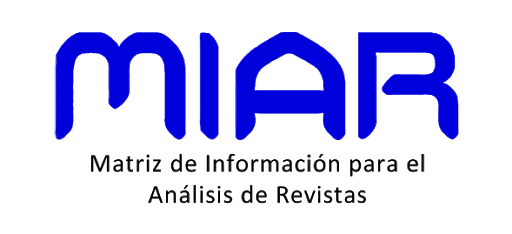Maternal-neonatal complications in the expulsive period: an comparative analysis of caesarean section and operative vaginal delivery
DOI:
https://doi.org/10.22529/me.2025.10(2)06Keywords:
Operative vaginal delivery, cesarean section, expulsive period, second stage of labor, maternal-neonatal complicationsAbstract
INTRODUCTION: The causes of the prolongation of the second stage of labor can be maternal and fetal. To contribute to birth in this period, interventions have been proposed: operative vaginal delivery (OVD) and cesarean section. Both procedures are not exempt from both maternal and fetal complications. OBJECTIVES: to compare the frequency of neonatal and maternal complications between operative vaginal delivery and cesarean section in the expulsive period of pregnant women at term. To establish the relationship between completion and admission to the Neonatal Intensive Care Unit (NICU). To analyze neonatal and maternal complications in the nulliparous subgroup.
MATERIAL AND METHOD: observational, retrospective, analytical study. Data will be included from patients seen between January 2021 and December 2022 in the Obstetrics Service of the Reina Fabiola University Clinic with a single pregnancy, ≥37 weeks, which ended by an OVD or by cesarean section in the second phase. The variables and their complications will be evaluated: third and fourth degree vaginal tears, postpartum hemorrhage and/or transfusion requirement, surgical site infections) and neonatal (need for hospitalization in NICU, birth trauma and neonatal death).
RESULTS: This study included 166 women, of which 134 (80.7%) were nulliparous, 28 (16.9%) primiparous, and 4 (2.4%) secundiparous. Patients had a mean (standard deviation, SD) age of 32.5 (4.48) years and a mean (SD) body mass index (BMI) of 27.3 (4.04). Of the 166 births, 86 (51.8%) were OVD and 80 (48.2%) were cesarean sections. One case of cesarean section after a failed OVD was highlighted. Regarding neonatal complications, 8 (4.8% - CI 1.01 - 1.16) of the newborns required admission to the NICU, with the majority of admissions following a cesarean section (87.5% vs 12.5%; p=0.023). No trauma or fetal deaths were recorded. In terms of maternal complications, 16 cases of postpartum hemorrhage were reported (9.6% - CI 0.432 - 3.44), with 7 (43.85%) cases after cesarean section and 9 (56.25%) after OVD; p=0.708. There were 4 cases of surgical site infection, 3 (75%) in cesarean sections and 1 (25%) in OVD; p=0.277. In the analysis by strata, the nulliparous subgroup showed that 50.74% ended their pregnancy by cesarean section and 49.25% by OVD without demonstrating that nulliparity was a variable associated with a higher frequency of maternal (p= 0.165) or neonatal complications (p= 0.157) No maternal deaths were recorded.
CONCLUSION: In this study, no significant differences were observed in terms of maternal complications such as postpartum hemorrhage and surgical site infections between OVD and cesarean section. However, the latter were associated with a greater number of admissions to the NICU. The results highlight the importance of considering the indications and possible complications associated with different routes of delivery.
References
-Rozo-Agudelo N, Daza-Barrera SC. Estimación de la frecuencia del parto vaginal instrumentado en Colombia en los años 2015 - 2019. Estudio transversal de registros poblacionales. Rev Colomb Obstet Ginecol. 2022;73(4):358-68. https://doi.org/10.18597/rcog.3878
-Jayaram J, Mahendra G, Vijayalakshmi S. Fetomaternal outcome in cesarean sections done in second stage of labor. Indian J Obstet Gynecol Res. 2016;3(1):279- 281. https://doi.org/10.5958/2394-2754.2016.00010.2
-Spong CY, Berghella V, Wenstrom KD, Mercer BM, Saade GR. Preventing the first cesarean delivery: Summary of a joint: Eunice Kennedy Shriver: National institute of child health and human development, society for maternal-fetal medicine, and American College of Obstetricians and Gynecologists workshop. Obstet Gynecol. 2012;120 (5):1181-93. https://doi.org/10.1097/AOG.0b013e3182704880
- Maestría medicina forense. Guías clínicas de diagnóstico y tratamiento servicio de gineco obstetricia. 2016. https://www.academia.edu/9511724/gu%c3%8das_cl%c3%8dnicas_de_diagn %c3%93stico_y_tratamiento_servicio_de_gineco_obstetricia. Último acceso: 5 septiembre 2023.
-Protocolo: parto instrumentado. Hospital Clinic, Barcelona. 2018. https://fetalmedicinebarcelona.org/wp- content/uploads/2024/02/Parto- instrumentado.pdf. Último acceso: 16 de julio 2024.
-Vashi CA, Vijay N, Bhalerao A, Shetty A. Obstetrics Outcomes in Women Undergoing Second-Stage Cesarean Section: A Cross-Sectional Study. Cureus. 2023; 15 (6-11). https://doi.org/10.7759/cureus.39911
-Unterscheider J, McMenamin M, Cullinane F. Rising rates of caesarean deliveries at full cervical dilatation: a concerning trend. Eur J Obstet Gynecol Reprod Biol. 2011;157(2):141-44. https://doi.org/10.1016/j.ejogrb.2011.03.008
-Khaniya B. Fetomaternal Outcome in Second Stage Caesarean Section. Nepal Med J. 2020;3(1):279-81. https://doi.org/10.3126/nmj.v3i1.28923
-Panelli DM, Leonard SA, Joudi N, Girsen AI, Judy AE, El-Sayed YY, Gilbert WM,Lyell DJ. Severe maternal and neonatal morbidity after attempted operative vaginal delivery. Am J Obstet Gynecol MFM. 2021 May; 3(3-9). https://doi.org/10.1016/j.ajogmf.2021.100339
-Tan PS, Tan JKH, Tan EL, Tan LK. Comparison of Caesarean sections and instrumental deliveries at full cervical dilatation: a retrospective review. Singapore Med J. 2019 Feb;60(2):75-79. https://doi.org/10.11622/smedj.2018040
-Hitt JM, Martin AS, Dietrich JE, Ahmed N, Lee GT. How do pregnant women' s perceptions of obstetric forceps change according to their demographic background: a cross sectional study. BMC Pregnancy Childbirth. 2021 May 11;21(1):371. https://doi.org/10.1186/s12884-021-03854-x
-Polkowski, M., Kuehnle, E., Schippert, C., Kundu, S., Hillemanns, P. y Staboulidou, I. Neonatal and Maternal Short-Term Outcome Parameters in Instrument-Assisted Vaginal Delivery Compared to Second Stage Cesarean Section in Labour: A Retrospective 11-Year Analysis. Gynecologic and Obstetric Investigation. 2017; 83 (90- 98). https://doi.org/10.1159/000458524
- Rawal S., Katuwal N., Shrestha S. Cesarean Section or Instrumental Delivery: The Best Choice for Mode of Delivery during Second Stage of Labor. JIOM Nepal. 2020; 42 (42-46). https://doi.org/10.59779/jiomnepal.1110
Published
How to Cite
Issue
Section
License
Copyright (c) 2025 Methodo Investigación Aplicada a las Ciencias Biológicas

This work is licensed under a Creative Commons Attribution-NonCommercial-ShareAlike 4.0 International License.




















